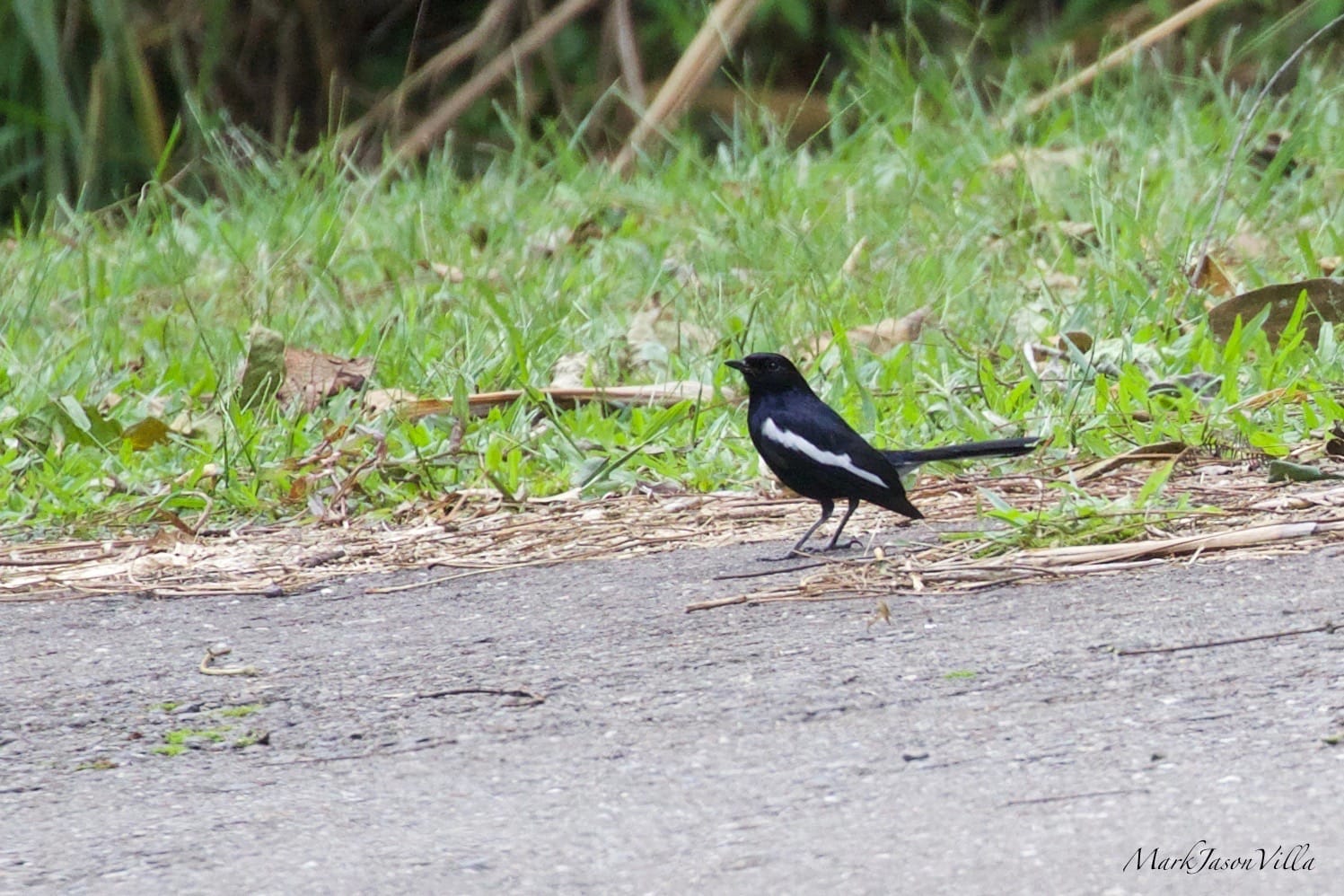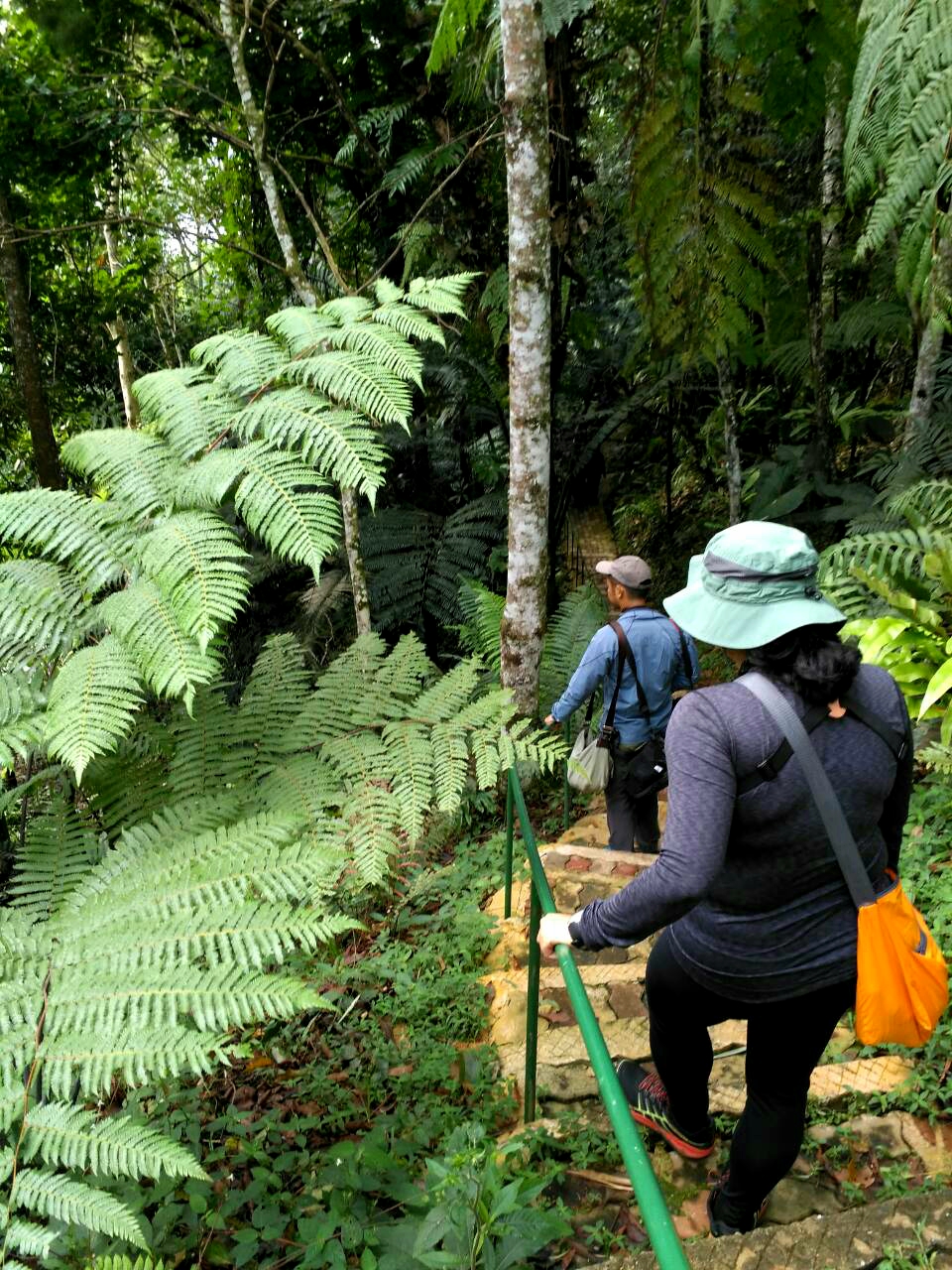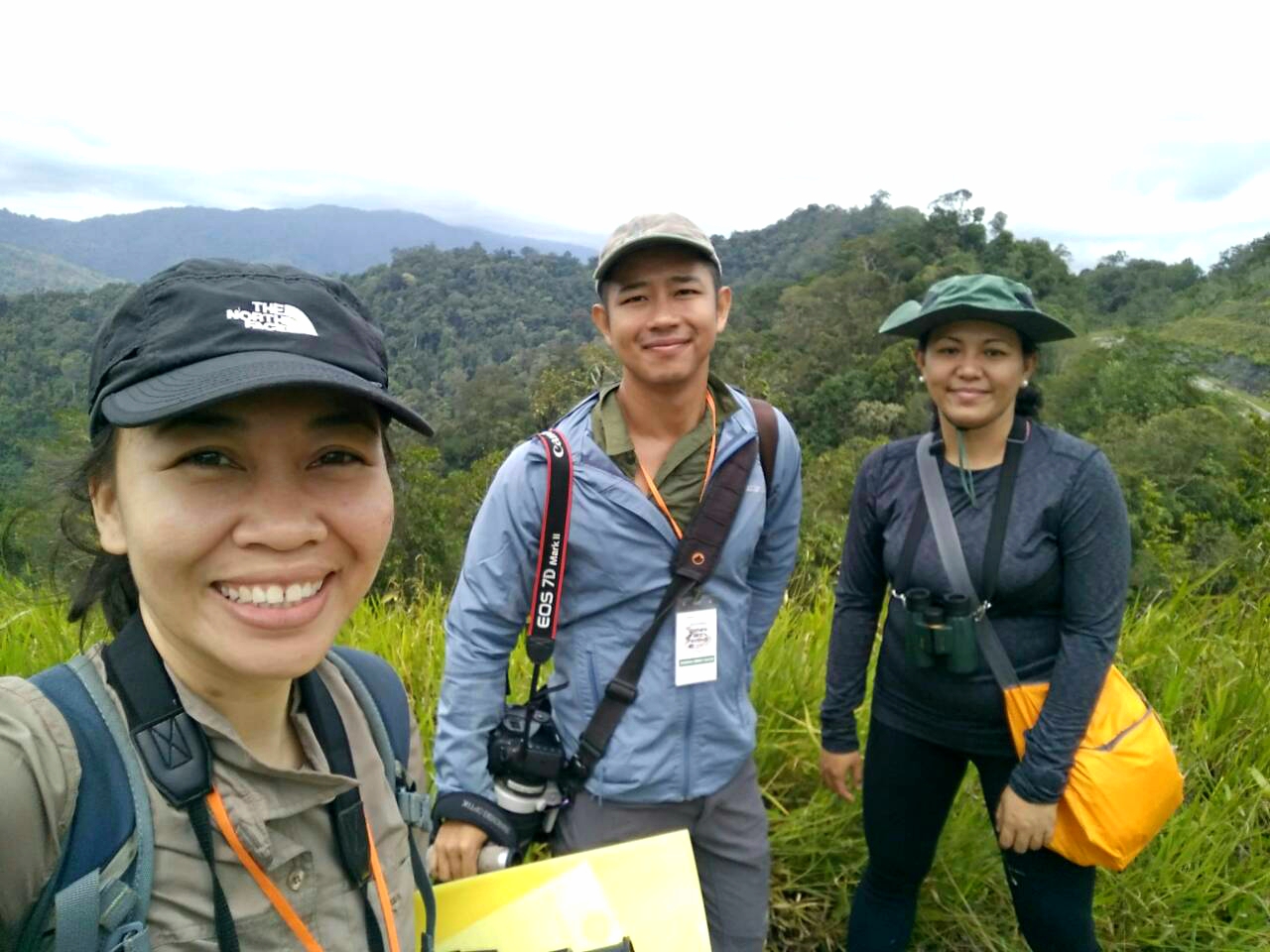Team WBCP in the 2017 Sabah Bird Race
Compiled by Ruth Francisco with contributions from Karen Ochavo and Mark Jason Villa
It was the second day of the 2017 Borneo Bird Festival, all five of us woke up very early to catch the shuttle that will bring us to the race venue, the Manis Manis Resort in Crocker Range National Park Headquarters (CRNP HQ). Only three of us—Karen, Mark, and I —were joining the race that day, but Doc Lolet and Martha will be there to support the team, and see some birds as well.
According to Google Maps, the Resort is around 93 km away from Kota Kinabalu (https://goo.gl/maps/mLhVqwoUyhS2). It can also accessed by car from the more popular Kinabalu Park, which is around 130 km away from CRNP HQ, and travel time will take around 3 hours.

(Source: Google Maps | https://goo.gl/maps/mLhVqwoUyhS2)
After a 2-hour smooth ride from our hotel in Kota Kinabalu, we finally set foot at the Resort. The wind was blowing so cold, and the sun was only beginning to rise.
While we were all eagerly waiting for the race to officially start, the Resort served us with good breakfast at the Cinnamon Café. Shortly after breakfast, Borneo Bird Club President and race master Gary Albert explained the rules of the race and the areas we could cover.
The race covered four major areas, each with a different elevation. These areas included the Crocker Nature Center–Fern Garden–Insectarium area (lowest elevation); the area extending from Cinnamon Café to the Football Field (lower elevation); the area around the hostels, chalets, the camping area (higher elevation); and finally, the road above the Camping Area, which connects to the Celcom Tower Area (highest elevation). Teams could only record birds seen by at least 2 members in any of these areas.
The 2-km Crocker Nature Trail which goes through old secondary and primary forests was off-limits that day. The strong winds and heavy downpour earlier that week had caused damage to the trail. In fact, the race was nearly cancelled due to bad weather. Thankfully, the skies started to clear that morning and the sun showed up.
The race started at around 7 AM. The Oriental Magpie Robin (Sabah race) was the first entry in our logbook. A male bird was singing melodiously near the Cinnamon Café that morning. Having uniformly deep black upperparts, underparts, and tail, it appears very different from the Philippine Magpie Robin, which has a white belly and bluish black upperparts.
In addition to the Sabah race, two other races of the Oriental Magpie Robin can be found in Borneo—the Kalimantan race and the Sarawak race. The former looks quite similar to the Sabah race, except that it has white on the edges of its tail for both sexes.
In contrast, the Sarawak race, which we also saw later that day, has distinct characteristics. Unlike the Sabah race, the Sarawak race has a white belly and black and white tail for both sexes. Also, the individuals in the Park seemed more confiding than those belonging to the Sabah race. Studies indicate that it is likely that the Sarawak race is gradually hybridizing with the other 2 Borneo races.


Our second logbook entry was the Olive-backed Sunbird, which appeared and sounded too familiar to the three of us. It is also a common resident species in the Philippines.
We were then clueless as where to go next as we are all first-time visitors of the Resort. After looking at the map, we decided to go down towards the Crocker Nature Center. Several Yellow-vented Bulbuls (YVBs) greeted us on our way down. Unlike the ones in the Philippines, those YVBs had pale white breasts and upper bellies.

Shortly after seeing the YVBs, we recorded the Ashy Drongo, Little Cuckoo-dove (LCD), Red-eyed Bulbul, Black-headed Bulbul, and many others. A Ruddy Cuckoo-dove, a split from the Philippine Cuckoo-dove, also quickly perched in front of us. We noted the size difference from the much more common LCD that we saw earlier in the race.

At the balcony of the Crocker Nature Center, we had good views of the Greater Green Leafbird. Although it is a common resident, its population is increasingly declining because of the illegal cage bird trade which is widespread across South-east Asia. Then we saw the Dusky Munia—a Bornean endemic—and added the Olive-winged Bulbul and Plain Flowerpecker.
As we went further down the road, we saw a foraging Emerald Cuckoo-dove. It was then followed by a number of other species, including the Plain Flowerpecker, Orange Flowerpecker, and the Long-tailed Parakeet which I had also seen from the Café earlier before the race started.
A cute trio of Bornean Falconets was the star of the area. After observing an individual, a pair appeared before us, happily perched on an exposed branch while carefully preening each other. The Bornean Falconet is endemic to Sabah and CRNP is among the best places to find them. The Bornean Falconet looks similar to the Philippine Falconet except that it has a white forehead which is why it is also called the White-fronted Falconet. Falconets are the smallest raptors in the world.

We quickly turned around before reaching the gate that led to a road not covered by the race. The team decided to explore the Insectarium and Fern Garden where there were some fruiting trees. There we found another team, along with one of the wardens. They all seemed very busy looking at the birds.

That area gave us magnificent views of several Bornean endemics, including the Mountain Barbet, Bornean Flowerpecker, and Bornean Ibon which is usually uncommon in other areas. We also recorded several resident species, including the Gold-whiskered Barbet, Brown Barbet, Black-and-yellow Broadbill, Eastern Crimson Sunbird, Bold-striped Tit-babbler, and Blue-crowned Hanging Parrot.

We spent more time in that area, hoping for a bird wave—a flock of mixed-species of birds moving together while foraging—to come our way. Although no bird wave occurred, we found some interesting species including the Blue-and-white Flycatcher, which is a rare migrant. Because it was perched on a branch under a largely dense canopy, Mark had to take several record shots to confirm that it was not the Zappey’s Flycatcher.

The star bird of that area was a very pretty, male Jambu Fruit Dove (JFD), which suddenly popped out to our surprise and perched long enough for good views. A female soon followed it. They stayed on their perch for a while, allowing all the three of us to enjoy them and for Mark to take several photographs. He was very excited to tell the team that it was only his second time (and first time in 10 years or so) to see the JFD, which is apparently a rarely-seen resident species.

Just before midday, the team decided to proceed and explore the other areas above the Cinammon Café. On our way up, we were hoping to find other common birds, such as the Eurasian Tree Sparrow, to add to our list but found none. Instead, we saw Pacific Swallows, Barn Swallows, Glossy Swiftlets, and several flocks of the Bornean Ibon which seemed quite common throughout the park. We managed to add to our list the Oriental Honey Buzzard, which was then soaring above us, as well as the Yellow-bellied Prinia.
We missed the mixed flock (including the Black-throated Oriole, Lesser Cuckooshrike, and Verditer Flycatcher) that came to feed at the trees around the hostels and chalets earlier that morning. Nonetheless, there we found the Ashy Drongo, Little Spiderhunter, Spectacled Spiderhunter, a big flock of Chestnut Munias moving around, and a few Asian Brown Flycatchers, which is a more common migrant in Borneo than in the Philippines. We also recorded another Bornean endemic, the Yellow-rumped Flowerpecker.


We decided to spend our remaining time before lunch at the trail leading up to the Tower. The marshall posted in the area indicated that there are usually quite a few birds around the area. However, we cannot go further up the trail as they closed it due to the bad weather in the previous days. The trail was very quiet, but Mark was happy that he found the Speckled Piculet, another rare resident species.
Then we headed back to the Café in time for lunch. We wanted to add a few more birds to our list so we decided to try the road leading to the Football Field before taking a lunch break. The team was excited to find the Buff-rumped Woodpecker, doing what it does best—drilling and drumming on a tree trunk.
After having lunch, we headed back down to the Insectarium and Fern Garden, thinking we had better chances of seeing more birds in the fruiting trees in the middle of the day. The area was quieter that time than earlier, but the pair of JFDs was still there. We added some good birds to our list including the Yellow-bellied Warbler and the Scaly-breasted Bulbul. We saw several Blue-and-white Flycatchers, this time the female/immature birds.


We went up again around the hostels, before slowly heading down back to the Café to submit our logbook. The race officially closed at exactly 3 PM and any team submitting its logbook later than that will be penalized with a deduction of 1 bird per minute being late.
Our team recorded 50 bird species, including 6 Bornean endemics, as well as 2 rare resident species, and 1 migrant. While there were a few foreign race participants, among the 13 competing teams, ours was the only team without any local member. Since birding at the CRNP HQ is something new to all of us, including Mark, we were not really hoping to win.

We did not win any prize that day, but for both Karen and I, trying out something new for the first time was a highly rewarding and fun experience. I just came from a 4-year hiatus, and am still rediscovering how to find and identify birds. Martha and Doc Lolet gained some lifers that day, too. They saw the Verditer Flycatcher (which we missed), Blue-crowned Hanging Parrot, and many others.
